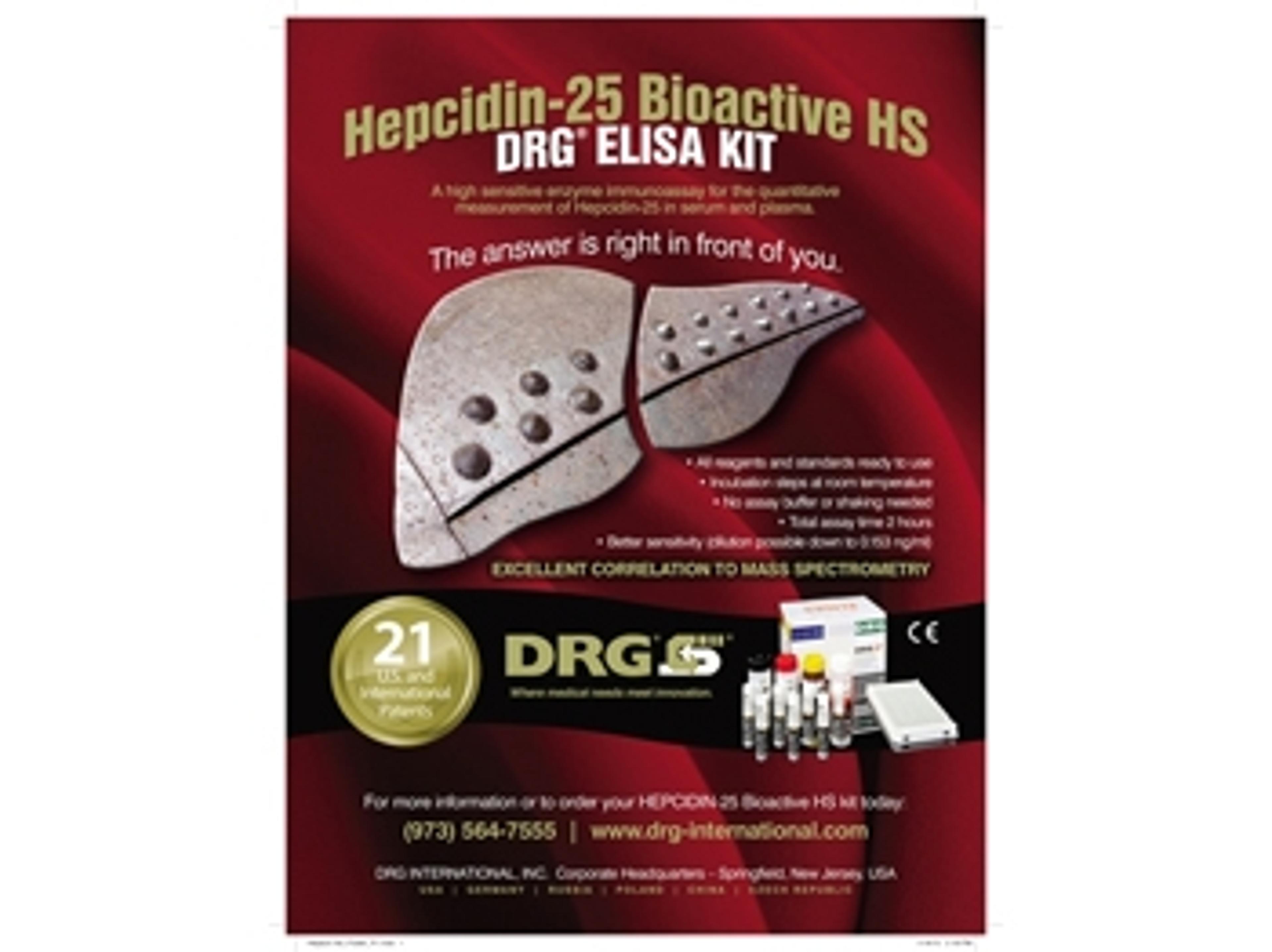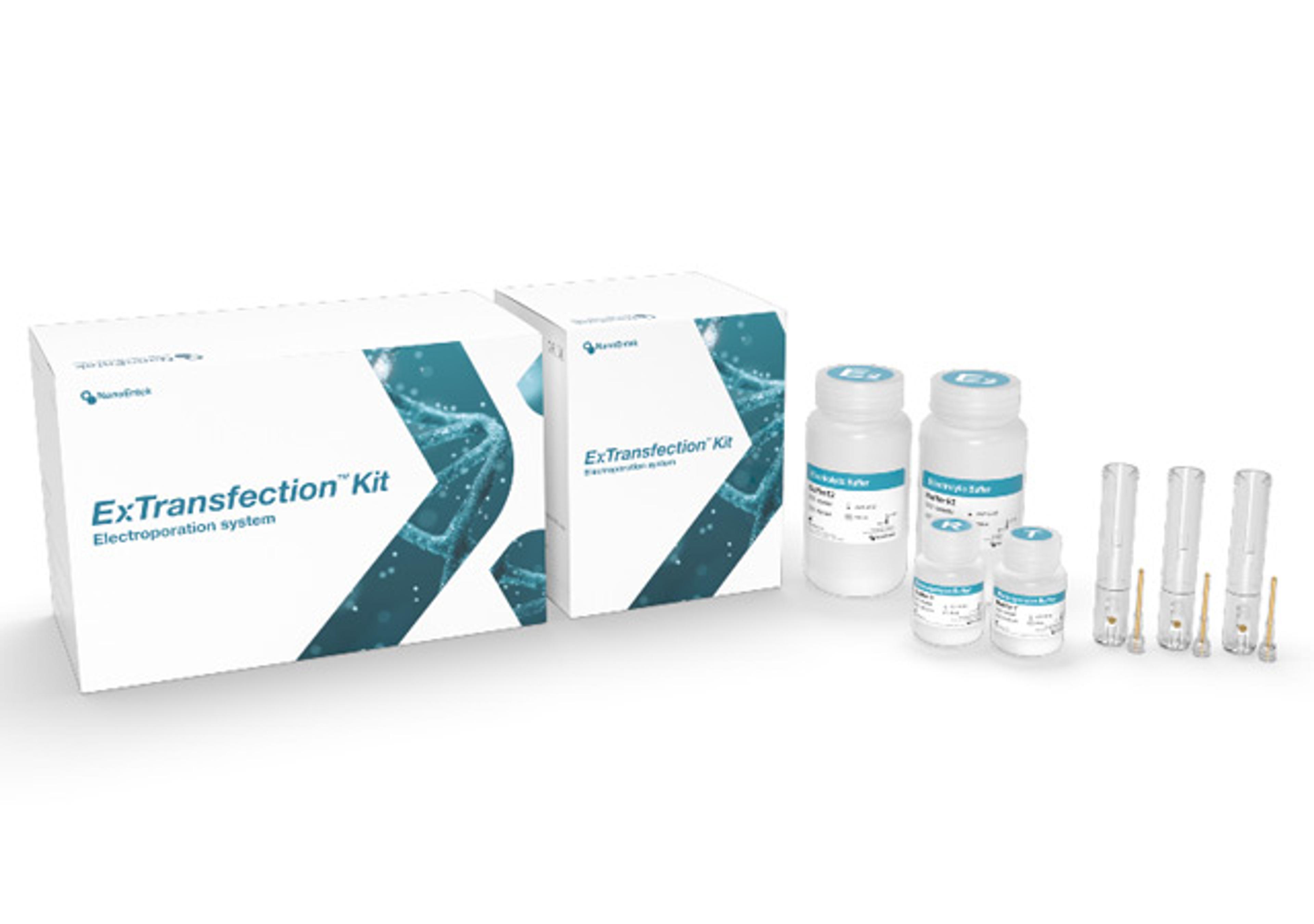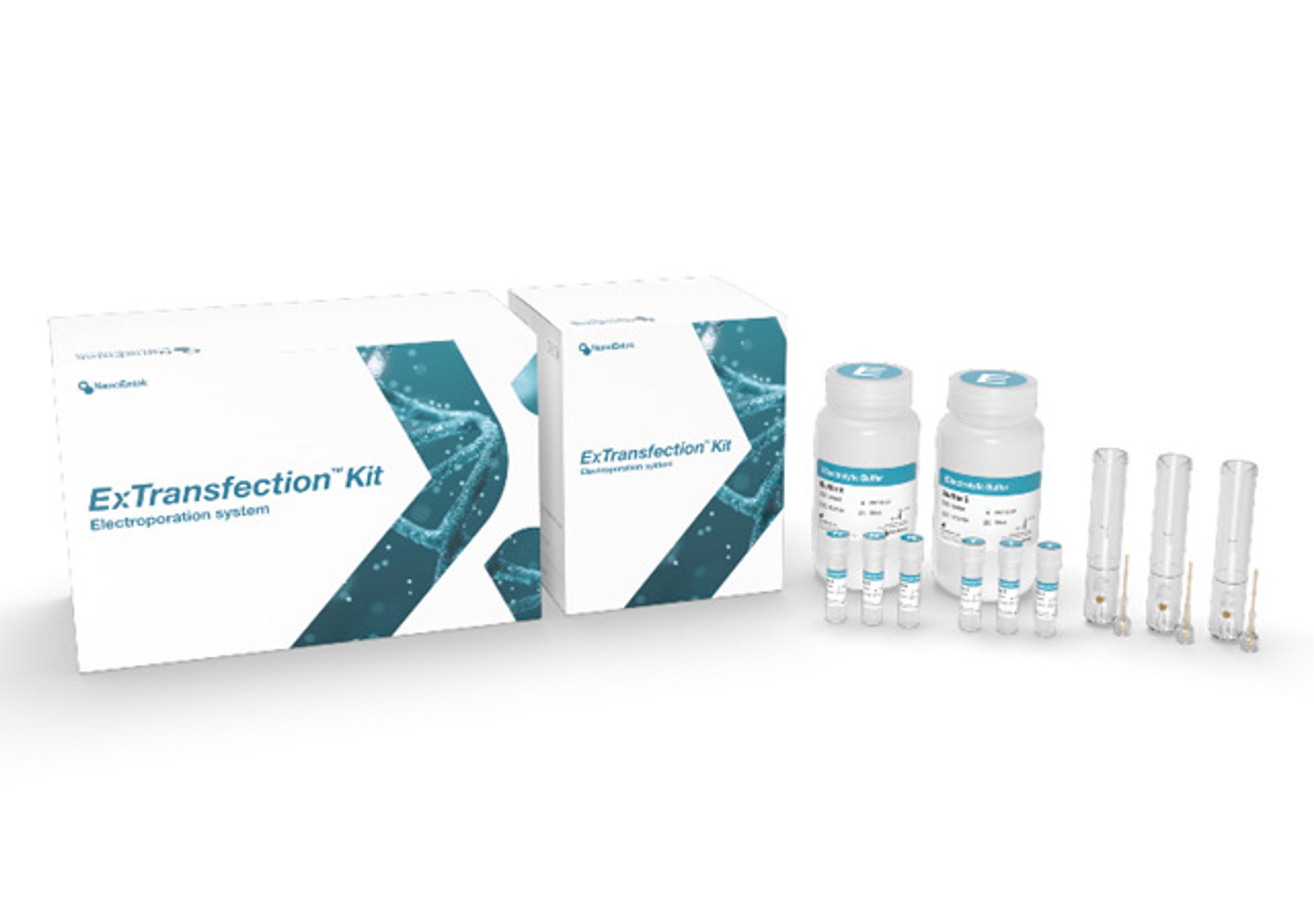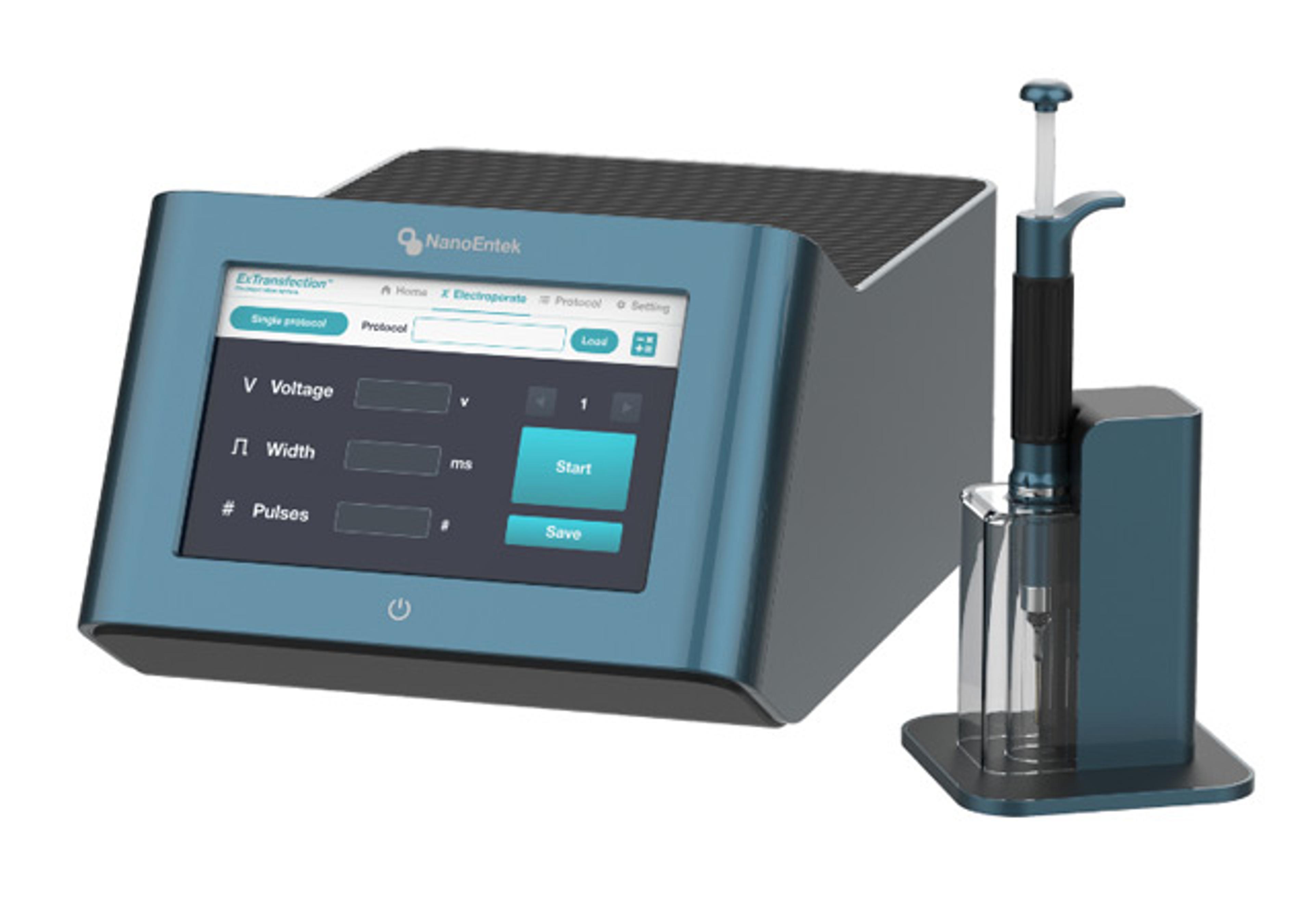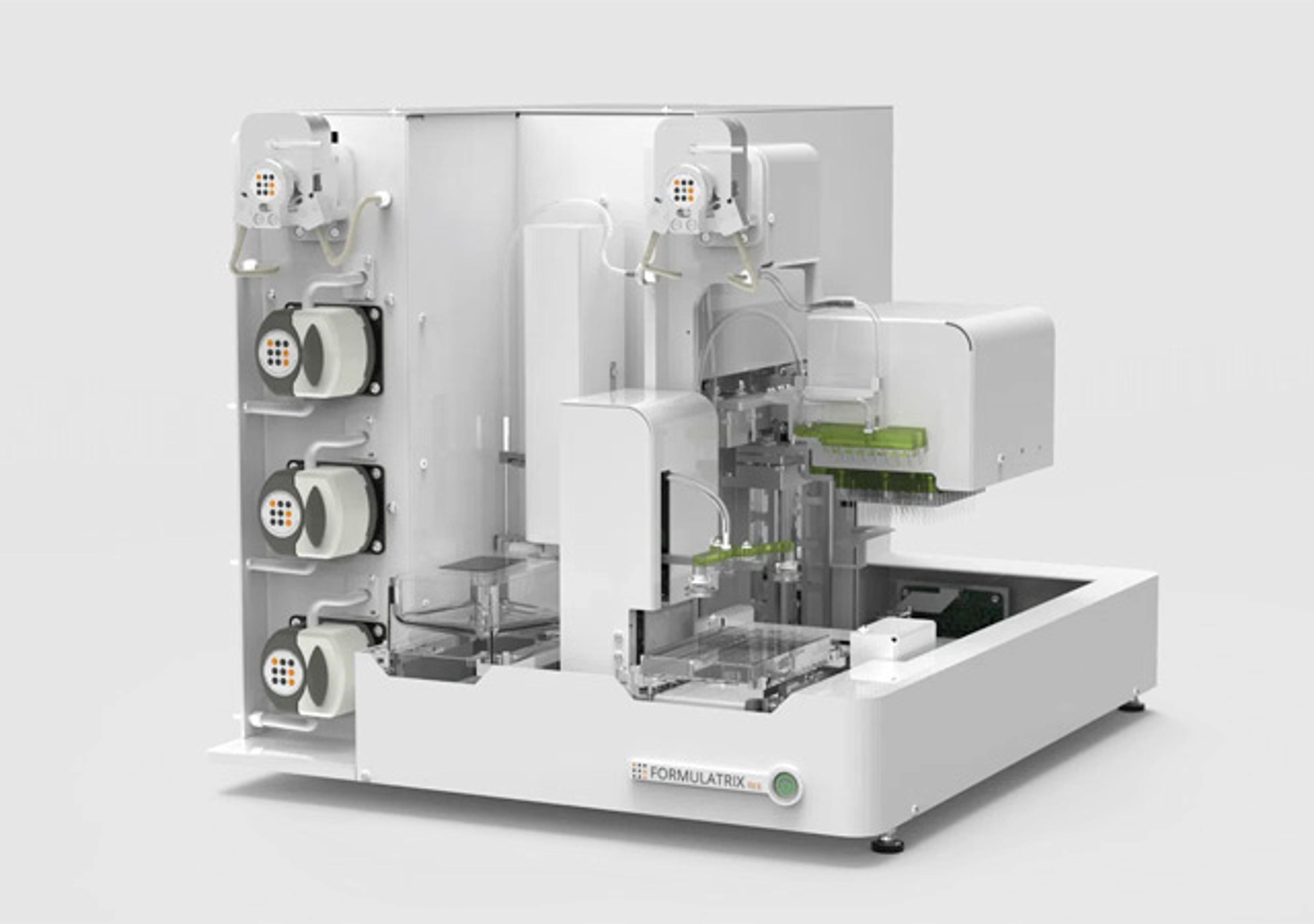Hepcidin 25 (bioactive) HS ELISA
High Quality Assays with Reproducible and Reliable Results

The supplier does not provide quotations for this product through SelectScience. You can search for similar products in our Product Directory.
analyze Hepcidin-25 levels in plasma samples
The DRG International Hepcidin-25 ELISA is a very simple and reliable assay. I have run multiple plasma samples. The total time from set up to data collection is 3 hours incubation 1.75 hours incubation. The only negative aspect of the kit is the price. However, this is the only Hepcidin-25 ELISA kit available for in-lab use. All other companies require you to send your samples to them for analysis.
Review Date: 7 Aug 2015 | DRG International Inc.
Effective in anemia and hemochromatosis. The work is easy with a short incubation period, giving quantitative results.
serum application
Effective in anemia and hemochromatosis. The work is easy with a short incubation period, giving quantitative results.
Review Date: 31 Jul 2015 | DRG International Inc.
This product was not consistent with results and standards. There was some tech support but sometimes it wasn't helpful.
Review Date: 1 Sept 2014 | DRG International Inc.
pharmaceutical safety assessment
This kit has been a joy to work with, the effort put into the creation of this assay is impressive. We have validated its use for both humans and non-human primates, and we get very good results in rats. The technical service and company support during our validation was invaluable.
Review Date: 1 Sept 2014 | DRG International Inc.
medical research
DRG kit is the only available one for serum hepcidin detection. The assay itself is quite reliable. The tech support is very helpful! They not only try to help realtime but also follow-up well.
Review Date: 1 Sept 2014 | DRG International Inc.
A high sensitive enzyme immunoassay for the quantitative measurement of Hepcidin-25 in serum or plasma. Hepcidin is an iron homoeostasis regulator peptide. The bioactive peptide Hepcidin-25 is generated predominantly in the liver by proteolytic cleavage of the C-terminal 25 amino acids of prohepcidin (1). Subsequent N-terminal processing of Hepcidin-25 results in smaller peptides of 20-24 amino acids that show greatly reduced activity and accumulate in theurine (2). Although originally identified as antimicrobial peptide (3), Hepcidin-25 is now established as a major regulator of dietary iron absorption and cellular iron release (4). Hepcidin exerts its regulatory function by counteracting the function of ferroportin, the major cellular iron exporter in the membrane of macrophages, hepatocytes, and the basolateral site of enterocytes. Hepcidin-25 induces the internalization and degradation of ferroportin, resulting in increased intracellular iron stores, decreased dietary iron absorption, and decreased circulating iron concentrations (5). Hepatocellular hepcidin synthesis decreases under conditions of increased demand for circulating iron like iron deficiency, hypoxia, anemia, and erythropoiesis. In contrast, hepcidin synthesis is induced by inflammation and infection (6). Serum Hepcidin-25 has been shown to add value to identify and differentiate specific disease conditions. Hepcidin deficiency causes hereditary hemochromatosis, characterized by body iron overload that may progress to liver cirrhosis (7). In addition, low Hepcidin-25 concentration can be induced by iron loading anemias (8) and chronic hepatitis C (9). In contrast, high Hepcidin-25 levels have been found in iron-refractory iron-deficiency anemia (10), during infection, chronic kidney disease (11), and after intensive exercise, explaining the high iron deficiency among athletes (12).The DRG Hepcidin 25 (bioactive) HS ELISA Kit is a solid phase enzyme-linked immunosorbent assay (ELISA) based on the principle of competitive binding. The microtiter wells are coated with a monoclonal (mouse) antibody directed towards an antigenic site of the Hepcidin-25 molecule. Endogenous Hepcidin-25 of a patient sample competes with a Hepcidin-25-biotin conjugate (Enzyme Conjugate) for binding to the coated antibody. After incubation the microtiter plate is washed to stop the competition reaction. In the following incubation the bound biotin molecules are detected with streptavidin peroxidase (Enzyme Complex). After incubation the plate is washed the second time. After addition of the substrate solution, the intensity of colour developed is inversely proportional to the concentration of Hepcidin-25 in the patient sample.



